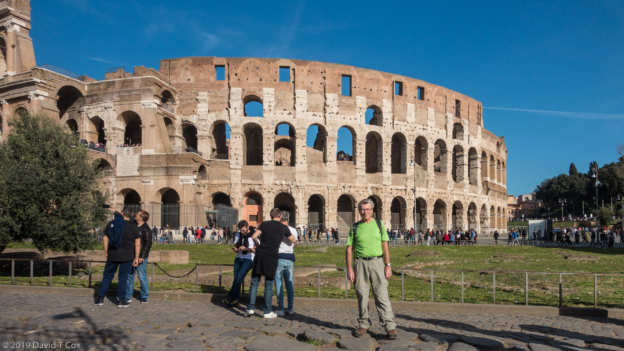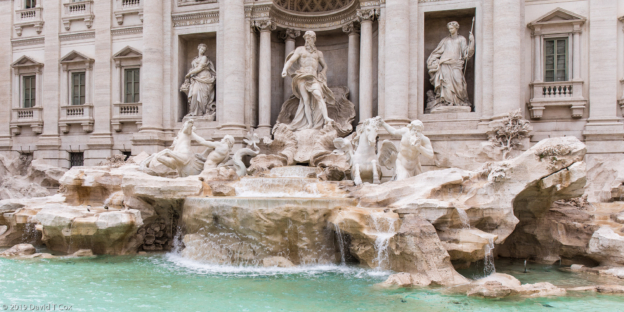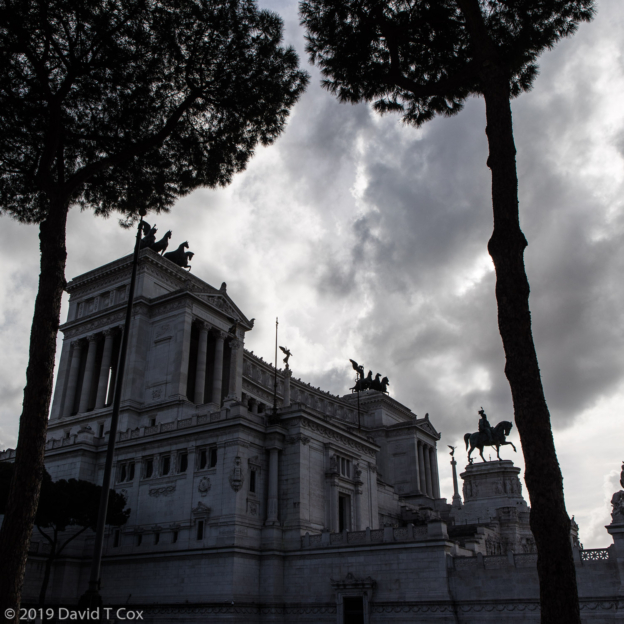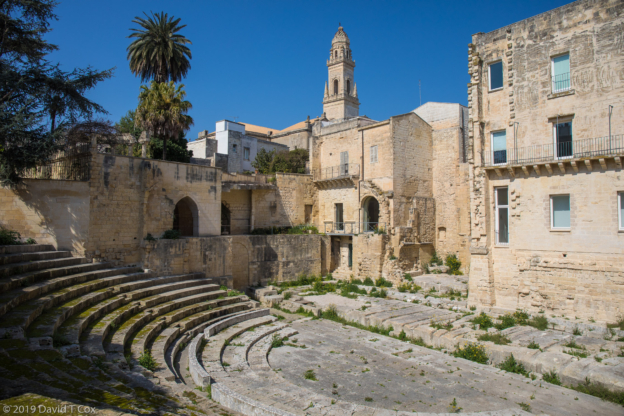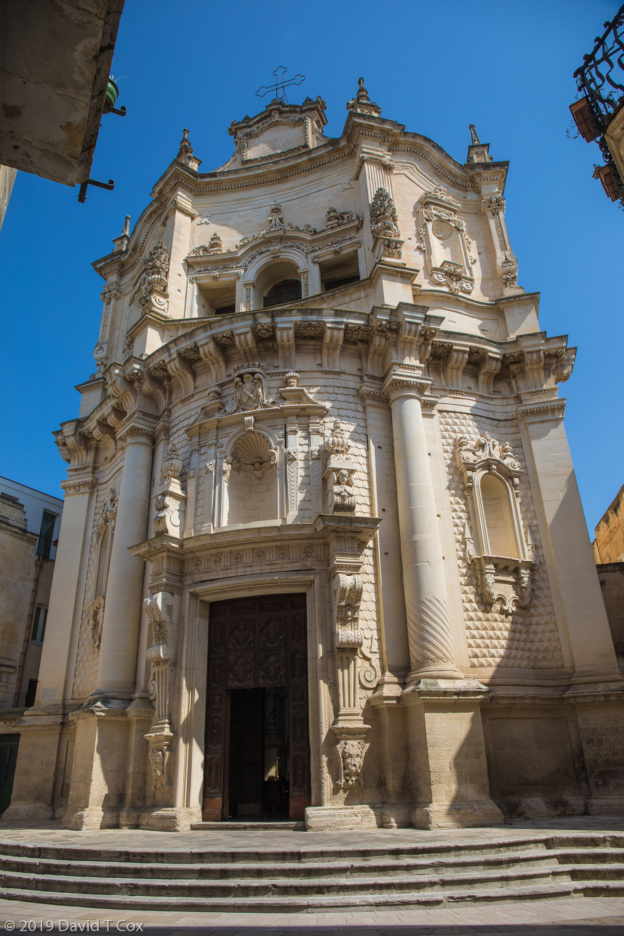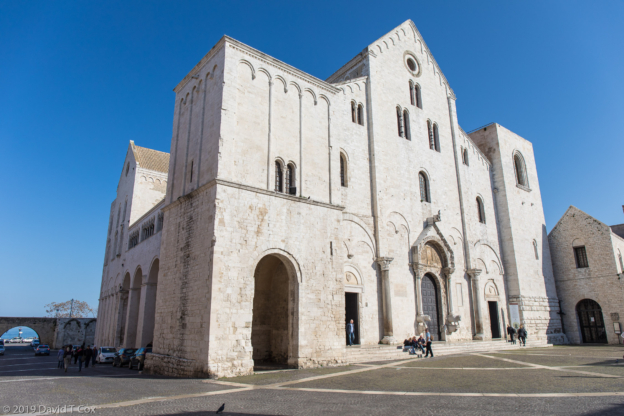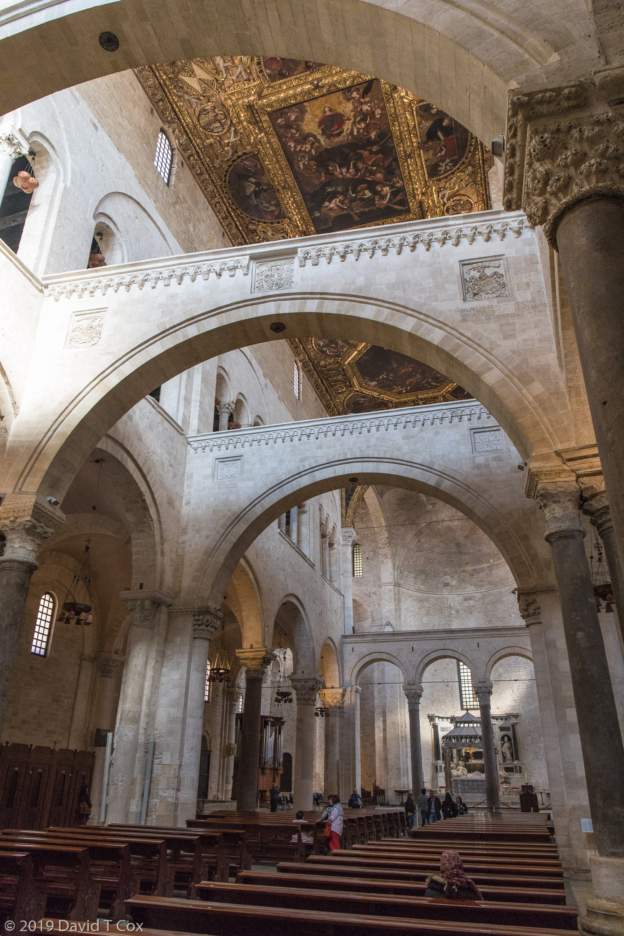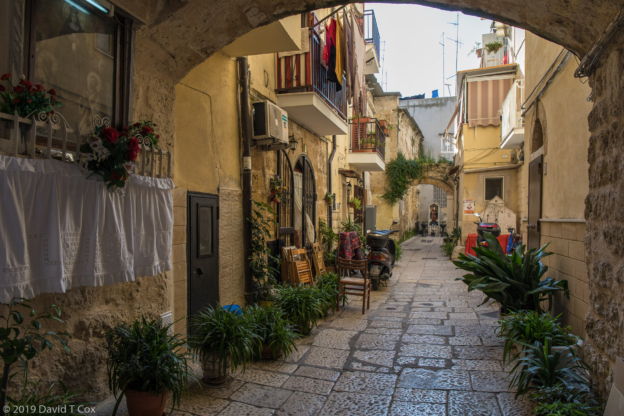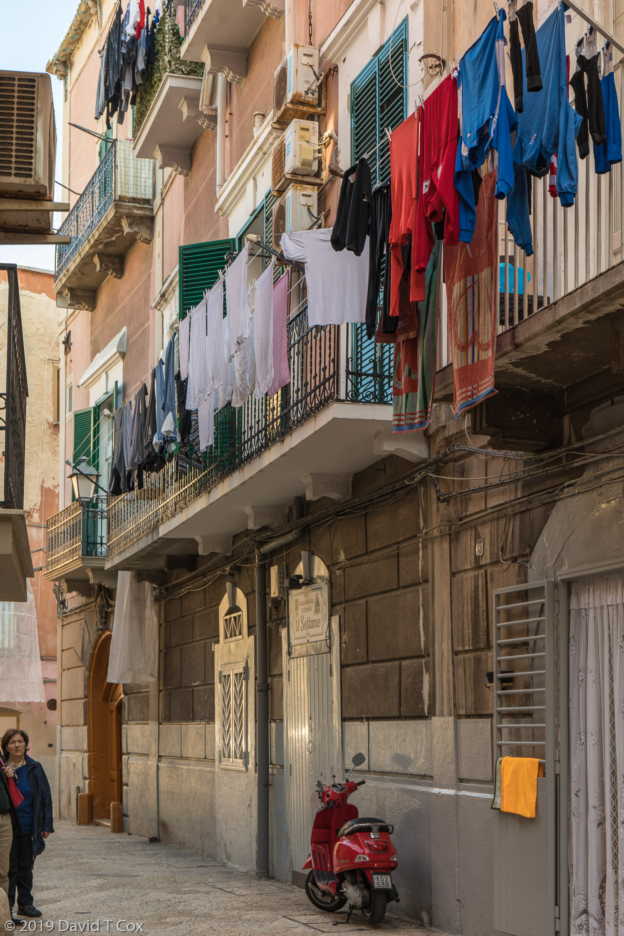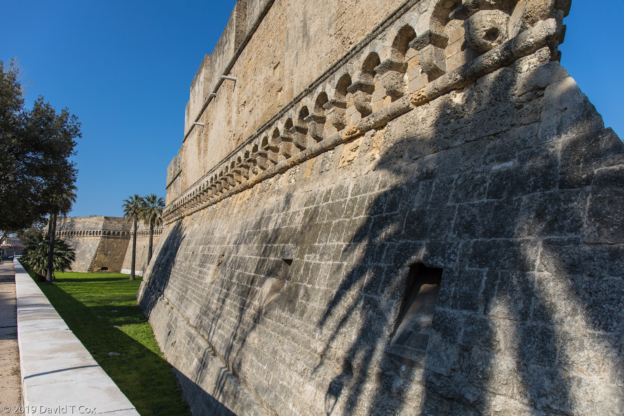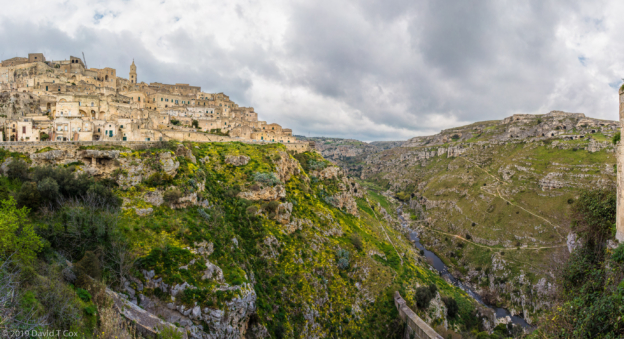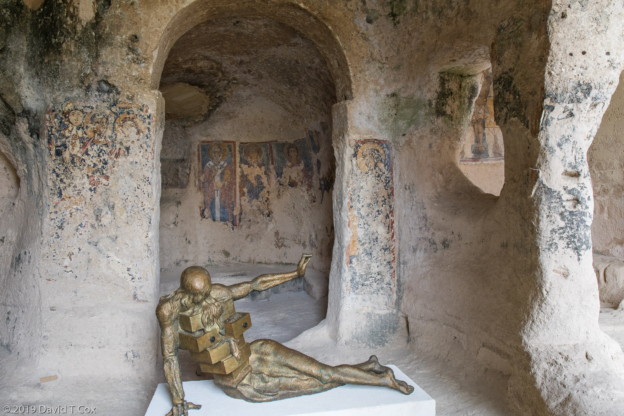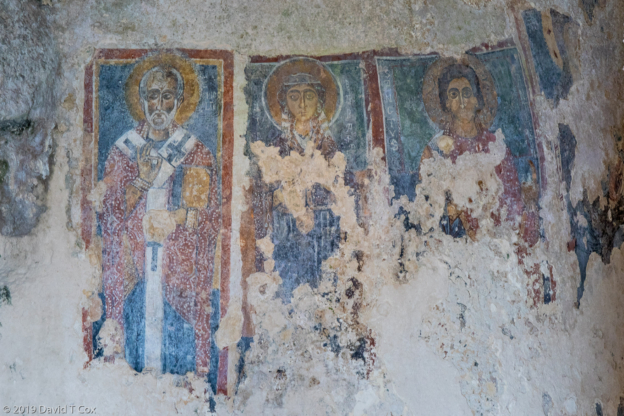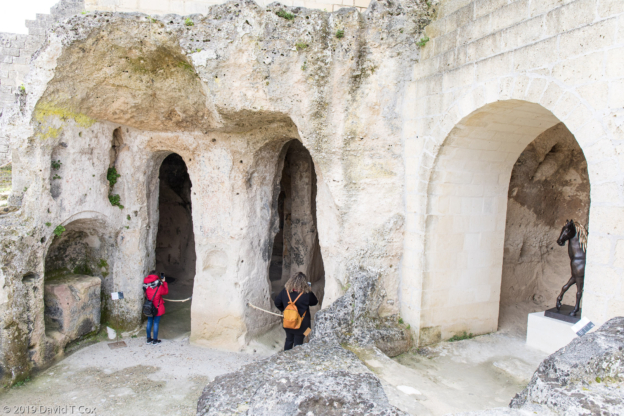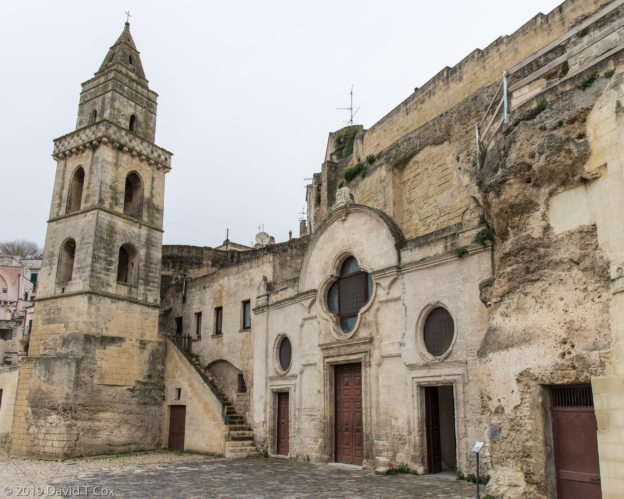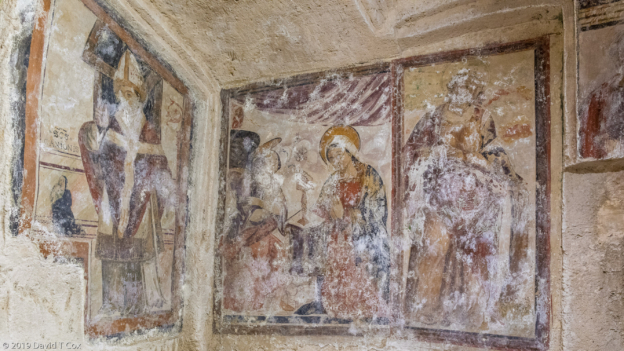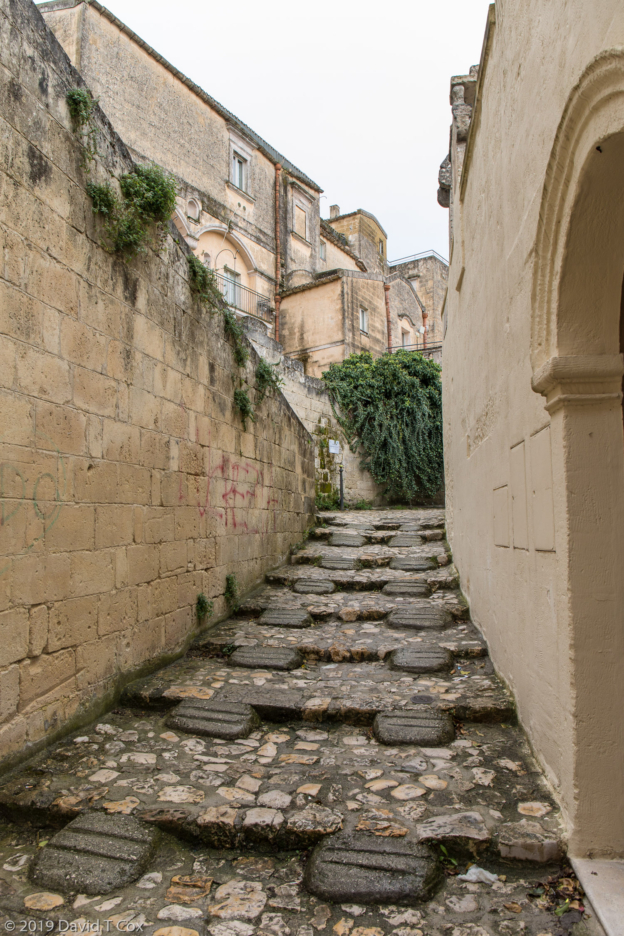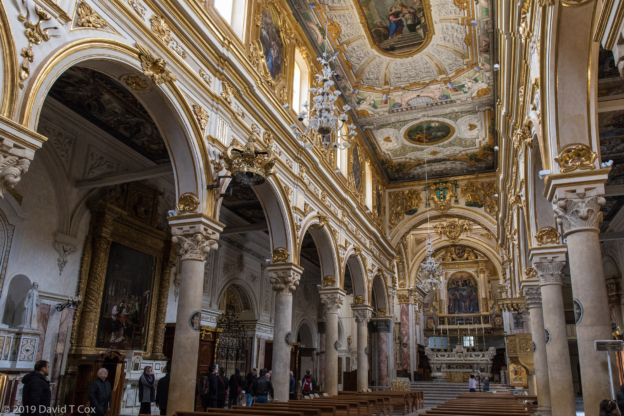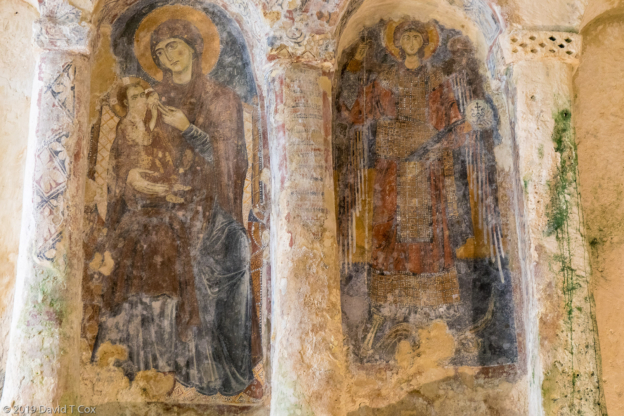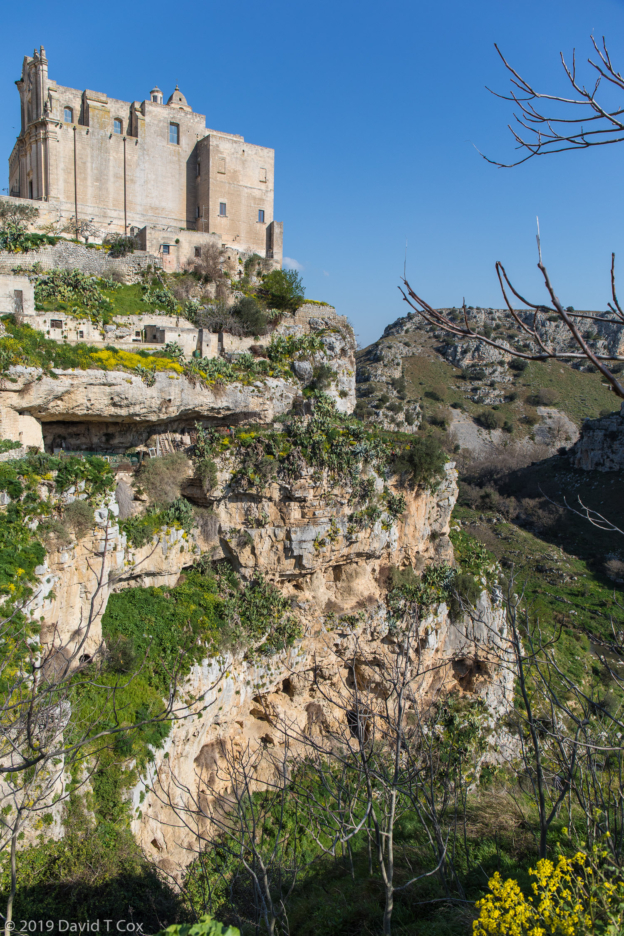All Photos Are Below the Travelogue Text
Click on Any Photo To Open Slide Show
To print the travelogue, right click anywhere on the page. Choose "Print" from your browser dialog box. You can choose Save to PDF in the browser print window.
Share your thoughts.
Email Dave - coxdavid55@hotmail.com
Gastronomically, Italy compares well with other northern Mediterranean locales. Although I again am drinking mostly red wine – wonderful but not as cheap as in Spain – I have found the Italian Birra Moreti La Rossa on tap to be an extremely malty double bock German beer and quite excellent. Half the restaurants are pizzerias although most serve more than pizzas. The pizza generally is excellent, always thin crust with fresh ingredients, unlike the horrid thick breaded pizzas with thawed toppings served often in the US. Travel is relatively easy, as train service is widespread and comfortable.
The trip to Rome commenced with a flight from Hell – the regional AA flight Tucson to Dallas was delayed 6 times for “mechanical” issues, while all later scheduled flights left on time – ahead of our earlier “delayed” flight. This caused me missed international connections, twice, with scheduled flights to London and on to Rome. Twice I had to exit secured gate areas to be rescheduled at the check-in desks. Then in Dallas, where American had massive cancelled flight problems due to weather, I had to find a special line, one hour wait, to get a boarding pass for the onward flight from London, which the computers in Tucson couldn’t issue. Upon final arrival in Rome, now late at night, the timing coincided with the simultaneous arrival of 4 jumbo jets from China, full of new Chinese tourists, creating massive lines through the terminal trying to get through passport check. I did not feel as “joyful” as usual upon arrival.
In Rome I stayed in a large “apartment” type room, with balcony, right at the end of Via Cavour, half a block from overlooking the Roman Forum and the forums of Minerva, Caesar and Augustus, and within sight of the Colosseum about 3 blocks away. I spent five days wandering through the various ruins, and walking the narrow streets to the Pantheon and Trevi Fountain.
From Rome I traveled by high speed rail the long distance south to Lecce in Italy’s heel. Here the “Old City”, with its maze of alleys and narrow stone streets, almost 100% was uniformly constructed in the 17th and early 18th centuries in late renaissance and baroque style; all structures built of soft yellowish stone giving the entire town an unusual ancient feel. Scattered throughout are excavated Roman constructions (a small theater and larger amphitheater) over which the baroque city now sits. My accommodations were in an apartment – really several large rooms – part of an old palace (Palazzo Bernardini).
Part of the excitement of foreign travel is associated with eating in restaurants where the menus are indecipherable, and the waiters do not speak English or Spanish. In my favorite Lecce eatery, I ordered what appeared to be translatable as a dish of rice mixed with meats – turned out to be a huge load of grilled meats and sausages on a board. A little heavy, but good. Later, trying to chat with a local at the bar, I discovered that a couple of the meat cuts and the sausages were horse (my sister will be upset with me – she always loved horses). It seems Italy eats more horse than any other country, and the heaviest consumption is down south in the heel, i.e. Lecce. Later, at another restaurant, having carefully checked that no horse (cavallo) was listed, I later discovered that foal or young horse requires a different menu word.
From Lecce I traveled the short distance back northwest by train to Bari on the coast – Bari also has a large Old Town sitting between two harbors on a peninsula sticking north into the Adriatic Sea. Here sits one of the more amazing churches I have visited anywhere; the Basilica St. Nicolas. Saint Nicholas is one and the same with St Nick, aka Father Christmas. Much venerated by Catholic and Orthodox Christians in the northeastern Mediterranean region, I had visited the Island of St Nicolas and his original burial place in Southern Turkey. Apparently in the 11th century Italian sailors removed his bones from his burial tomb, and brought them to Bari where a Norman built a large crypt as the new burial chamber and constructed the massive Romanesque Basilica over it. Now devout Orthodox Christians and Catholics pilgrimage to the site and light candles, sit and pray, and kiss the icons and glass encased relics of the saint in the underground crypt. Above, the church constitutes a massive towering Romanesque structure, outside a brilliant white stone, and inside rows of columns with carved capitals and spanning arches. The very high ceiling is 100% covered with colorful frescos.
From Bari I traveled by local train to Matera in the neighboring region of Basilicata. Old Matera is a World Heritage site, one of the oldest continuously occupied cities on earth. The two halves of the ancient city sit in opposite tilted bowls which descend from a high ridge into a steep and deep canyon with a small river. At the top of the ridge rises the massive cathedral. The rock bowl and cliff faces all are a soft, yellow-white sandstone or volcanic tuft, and are full of natural caves. Many of the upper caves have been converted into sculpted cave dwellings over the past 1,000 years. Throughout the middle ages, Byzantine era and into the baroque period large numbers of churches and convents also were carved into the soft stone. Inside, on walls and ceilings, most of the religious structures were covered originally with colorful frescos, now much destroyed within the last century as the country forced a clean-up the deplorable conditions the people had lived in. Within the last several decades most of the better preserved caves have been converted to houses or opened as cave museums which can be visited. Architecture and frescos which still can be seen within the best churches, including in those now built above ground, date mostly from the 11th through the 16th centuries, and usually patterned on Byzantine style. In many ways this could be a sister location to the great fairy chimney caves and cave churches around Goreme in Cappadocia, central Turkey, although the Turkey cave churches are often older, superior in construction and many still completely covered with wonderful frescos.
As with a few other unusual sites I have visited, Matera is one of those magical places where the normal laws of physics do not apply. After a day of roaming the narrow and very steep alleys and never ending stairways, it seems clear upon return to the day’s starting point that one has ascended far more than descended.
The weather often has been overcast, cold and windy. Not unexpected for early spring. From Matera I returned to Bari to catch the direct bus to Naples on the opposite coast.
Later. Dave
- Dave before Colosseum, Rome, Italy
- Colosseum, Rome, Italy
- Trevi Fountain, Rome, Italy
- Altar of the Fatherland, aka II Vittoriano, Rome, Italy
- Roman Theater with Cattedrale in background, Lecce, Italy
- San Mateo Paroquia, Lecce, Italy
- Basilica St Nicolas, 12th C Norman Romanesque, Bari, Italy
- Basilica St Nicolas, 12th C Norman Romanesque, Bari, Italy
- street scene with clothing hung out to dry, Old Town, Bari, Italy
- street scene with clothing hung out to dry, Old Town, Bari, Italy
- Svevo Castle, orig 12th C Norman, Bari, Italy
- Sasso Caveoso from Chiesa San Pietro, pano, Matera, Italy
- view in Sasso Barisano, Matera, Italy
- Chiesas Madonna il Virtu and S Nicola dei Greci cave churches with frescos 13th-17th C, Matera, Italy
- Frescos 13th C in Chiesas Madonna il Virtu and S Nicola dei Greci cave churches with frescos 13th-17th C, Matera, Italy
- Chiesas Madonna il Virtu and S Nicola dei Greci cave churches with frescos 13th-17th C, Matera, Italy
- Plazza Vittorio, Matera, Italy
- Chiesa San Pietro Barisano, 12th – 13th C,,, Matera, Italy
- frescos 15th – 16th C, Chiesa San Pietro Barisano, 12th – 13th C,,, Matera, Italy
- alleys and stairs, Matera, Italy
- Catedral, 13th C, Matera, Italy
- fresos Virgin breastfeeding and Archangel Michael, 13th C, Chiesa Santa Lucia Alle Malve, 9th – 13th C,,, Matera, Italy
- San Agostin Church, Matera, Italy
To print the travelogue, right click anywhere on the page. Choose "Print" from your browser dialog box. You can choose Save to PDF in the browser print window.
Share your thoughts.
Email Dave - coxdavid55@hotmail.com
